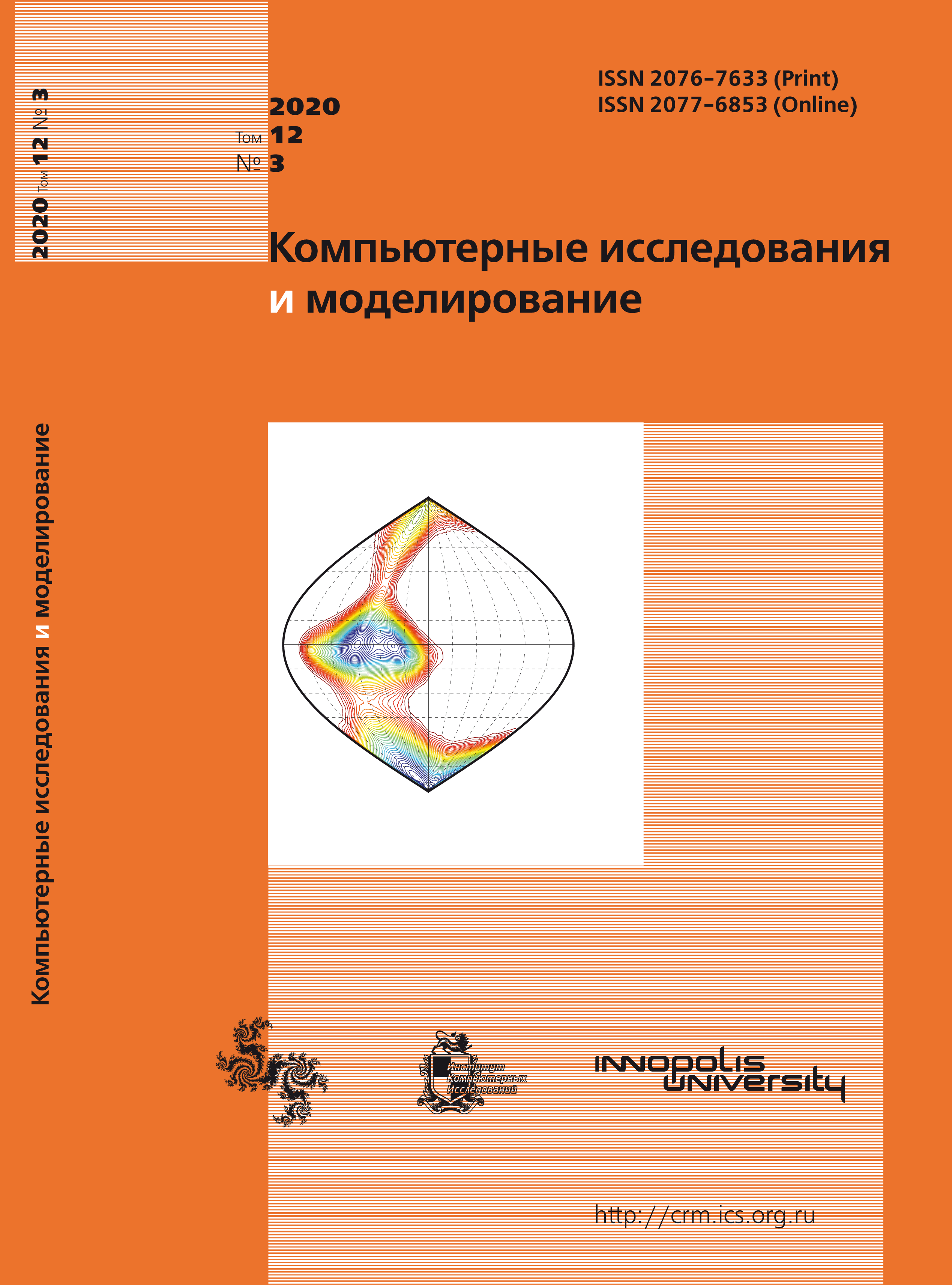All issues
- 2024 Vol. 16
- Issue 1 (special issue)
- 2023 Vol. 15
- 2022 Vol. 14
- 2021 Vol. 13
- 2020 Vol. 12
- 2019 Vol. 11
- 2018 Vol. 10
- 2017 Vol. 9
- 2016 Vol. 8
- 2015 Vol. 7
- 2014 Vol. 6
- 2013 Vol. 5
- 2012 Vol. 4
- 2011 Vol. 3
- 2010 Vol. 2
- 2009 Vol. 1
Bicompact schemes for gas dynamics problems: introducing complex domains using the free boundary method
 pdf (570K)
pdf (570K)
This work is dedicated to application of bicompact schemes to numerical solution of evolutionary hyperbolic equations. The main advantage of this class of schemes lies in combination of two beneficial properties: the first one is spatial approximation of high even order on a stencil that always occupies only one mesh cell; the second one is spectral resolution which is better in comparison to classic compact finite-difference schemes of the same order of spatial approximation. One feature of bicompact schemes is considered: their spatial approximation is rigidly tied to Cartesian meshes (with parallelepiped-shaped cells in three-dimensional case). This feature makes rather challenging any application of bicompact schemes to problems with complex computational domains as treated in the framework of unstructured meshes. This problem is proposed to be solved using well-known methods for treating complex-shaped boundaries and their corresponding boundary conditions on Cartesian meshes. The generalization of bicompact schemes on problems in geometrically complex domains is made in case of gas dynamics problems and Euler equations. The free boundary method is chosen as a particular tool to introduce the influence of arbitrary-shaped solid boundaries on gas flows on Cartesian meshes. A brief description of this method is given, its governing equations are written down. Bicompact schemes of fourth order of approximation in space with locally one-dimensional splitting are constructed for equations of the free boundary method. Its compensation flux is discretized with second order of accuracy. Time stepping in the obtained schemes is done with the implicit Euler method and the third order accurate $L$-stable stiffly accurate three-stage singly diagonally implicit Runge–Kutta method. The designed bicompact schemes are tested on three two-dimensional problems: stationary supersonic flows with Mach number three past one circular cylinder and past three circular cylinders; the non-stationary interaction of planar shock wave with a circular cylinder in a channel with planar parallel walls. The obtained results are in a good agreement with other works: influence of solid bodies on gas flows is physically correct, pressure in control points on solid surfaces is calculated with the accuracy appropriate to the chosen mesh resolution and level of numerical dissipation.
Indexed in Scopus
Full-text version of the journal is also available on the web site of the scientific electronic library eLIBRARY.RU
The journal is included in the Russian Science Citation Index
The journal is included in the RSCI
International Interdisciplinary Conference "Mathematics. Computing. Education"






